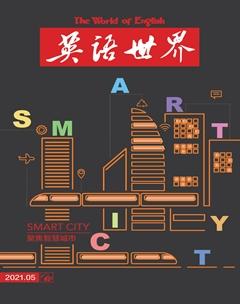《中西文明对比》选译(一)
【譯者言】 前年上半年,北京外国语大学英语学院教师梁昊博士请我读一遍她翻译的书稿《中西文明对比》3,帮她把一下质量关。她1996年在北外读硕士,后又读博士,我都是她导师,她的请求我不能不答应;更重要的是,我看书中有许多论述西方文化的经典选篇,这正是长期以来我的兴趣所在,于是欣然接受。然而一年过去了,由于手头事情比较多,一直没有抽出时间看她的译稿。2020年秋,北京外国语大学成立不久的北外学院请我为2019级的学生教翻译,第一学期是英译中。我想篇子不妨就从这本Comparing Civilizations和我一直在翻译的The Idea of a University里选,一举两得。课上完后,我又想,之前我上完一轮翻译课,都把译稿和注释整理出来,投给期刊,这次不妨故伎重演,区别仅在于这一次是二人同行。本刊主编欢迎我的这一想法,于是就开设了“译路同行” 这个栏目,邀请读者与译者同行。
Authors Preface
There is a story behind the origins of Comparing Civilizations: China and the West. In the autumn of 2001, when John G. Blair was serving as a Foreign Expert at Beijing Foreign Studies University, he saw that the materials being used to teach Western civilization were those adapted from an American textbook of some years before4. He remarked to the Professor in charge that these materials did not take into account the fact that the students studying them were not Americans but Chinese. The retort was: “Why dont you make us a course that will do just that?5” The result, several years and four revisions later, is the present CCCW.
There were some revealing steps6 along the way. Initially a course was proposed7 to senior professors8 of English at BFSU as an American-style Western civilization course: a chronological sequence moving from the Greeks to the Romans to the Europe of the Middle Ages and so on. The professors were unanimous in rejecting this model. They insisted that they want a “genuinely comparative course,” though9 at the time no one could point to a model of what that meant10, either in China or elsewhere. The obvious alternative structure was topical, with comparisons between the two civilizations taking place within a series of categories representing important cultural domains11. CCCW today is an evolved version of that kind of “genuinely comparative” format.
Readers of CCCW have often expressed a legitimate curiosity about the authors: their backgrounds and what led them to invest so much time and energy in this massive and unprecedented project. Here are some partial answers. Both authors came to this project with similar experiences, two of which proved crucial. The first was an American-style liberal arts college12 education: Brown University (1956) for Dr. John Blair and for Dr. Jerusha McCormack13 Wellesley14 College (1964), where in an earlier generation15 Soong Meiling, better known in the West as16 Madame Chiang Kai-Shek, was educated.
Liberal-Arts Education
The ideas behind liberal-arts education were spelled out by Cardinal17 John Henry Newman in the mid-19th century. Newman conceived of college-level study as18 giving its students an education as opposed to training. To him, the most important goals of a university were not vocational19. Education in his sense20 aspires21 to broaden the mind. For example, it presumes that all forms of knowledge are related to each other. Hence, it strives to relate all academic disciplines to each other, at least on some level. Although students studying under such a conception do choose a major (principal subject) on which to concentrate, they are free to range widely22 among courses classified as electives. In fact, during the first year or two of most American colleges, students are typically required to spread attention over23 a variety of disciplines in the humanities or arts, as well as the social sciences and physical sciences. These24 are commonly designated as distribution requirements.
To satisfy such requirements, John Blair studied at an introductory level: Chemistry, Mathematics, and Biology; Economics, Psychology, and Sociology; Philosophy, History, and English Literature. His foreign language was French. When he was obliged25 to select a major, he chose Literature, English and American, as the least limiting field he had yet26 encountered. The liberal-arts emphasis taught him how to learn so later he could access Anthropology, Political Science, and Art History at need.
Similarly, distribution requirements ensured that Jerusha Hull McCormack left Wellesley College with a good grounding in Biology and Botany, as well as a working knowledge of Sociology, European History, English and Latin Literature. She studied these before she concentrated on her joint major27 of Fine Arts and Philosophy.
This breadth of educational background has made it possible for both authors to access the diversity of disciplines represented in CCCW. From there both went on to graduate study in English and American Literature. That led each to a Ph.D. (respectively at Brown University in 1962 and Brandeis University in 1973). This stage of their studies constituted, in Western terms, professional training as opposed to their earlier liberal education. Their liberal arts education contributed more to CCCW than the research skills they learned as part of their professional training. ■
作者自序
《中西文明对比》这部书的背后有一个故事。2001 年秋,约翰·G.布莱尔在北京外国语大学担任外国专家,看到西方文明这门课的教材是根据美国前些年出版的教科书改编而成,便对负责这门课的老师说,这些教材没有考虑到学生是中国人而不是美国人。那位老师答道:“那您能不能为我们的学生量身定制一套教材呢?”结果就是,几年后,经过四轮修订,这部《中西文明对比》呈现在读者面前。
本書的编撰过程有些环节颇有意思。教程编写之初,笔者曾向北外的一些老教授提议,开设一门美国方式的西方文明课, 按照时间顺序,从古希腊和古罗马讲到中世纪欧洲等等。可是这一提议遭到教授们一致反对。他们坚持说,他们要的是一门“真正的对比课”,不过无论在中国还是在其他地方,当时没人能说明符合这一要求的课是什么样子。另一种显而易见的架构是围绕主题展开,即将两种文明放在一系列重要文化主题下加以对比。《中西文明对比》便是由当初那个“真正的对比课”设计演变而来。
常有读者表示,他们对本书的两位作者很好奇(这很正常):他们是什么背景,为什么对这项史无前例的大工程投入如此多的时间与精力? 以下是部分答案。两位作者参与这项工程之前的经历相似,其中有两点非常重要。其一是美国大学的文理教育。约翰·布莱尔博士本科毕业于布朗大学(1956),洁茹莎·默考马克博士本科毕业于维斯理学院(1964),20世纪初,宋美龄(西方多称之为蒋夫人)曾就读于该学院。
文理教育
文理教育背后的理念是枢机主教约翰·亨利·纽曼在19世纪中叶提出的。他认为大学层次的学习应给予学生教育,而非培训。在他看来,大学最重要的目标不是帮助学生进入职场。在他心目中,教育就是要力争拓宽学生的精神世界。例如,教育假定所有形式的知识都相互关联。从这一点出发,教育致力于把所有学科都彼此关联起来,至少在某一层次上如此。在这一观念之下,学生虽然选择一个专业(主修科目),却可以在被定为选修课的广泛课程中自由驰骋。事实上,美国大多数大学通常都要求学生在入学后的头一两年里把注意力铺开,涉猎多种学科,既学人文或艺术,又学社会科学和自然科学。这种修课上的多样性通常称为“分布要求”。
为满足这一要求,约翰·布莱尔修过以下入门课程:化学、数学、生物,经济学、心理学、社会学,哲学、历史及英文。他的外文是法文。到了选专业的时候,他选的是英美文学,因为这是他至此所遇到的局限性最小的领域。对文理科的重视教会了他如何学习,所以他后来可以根据需要涉足人类学、政治学和艺术史。
同样,分布要求确保洁茹莎·赫尔·默考马克从维斯理学院毕业时既具有扎实的生物学和植物学基础,又在社会学、欧洲史、英文和拉丁文学方面具备一些基础知识。她在修完这些课程后才专攻她的美术和哲学二合一专业。
正是两位作者的宽广教育背景让他们得以涉猎本书涵盖的众多领域。由此他们接着读研,领域是英文和美国文学,各自获得博士学位(约翰·布莱尔 1962 年于布朗大学,洁茹莎·默考马克 1973 年于布兰戴斯大学)。与其早先的文理教育不同,他们这一阶段的学习构成西方体系中的专业培训。他们接受的文理教育对本书的贡献大于他们在专业培训中学到的研究技能。 □
1北京外国语大学英语学院讲师;1999年获北京外国语大学英语语言文学硕士学位,2007年获北京外国语大学英语语言文学博士学位。研究领域是英中对比语言学、英语史和语法化。 2北京外国语大学长青学者、外国语言研究所教授,广西师范大学漓江学者、外国语学院教授;1985年北京外国语大学英语语言文学硕士毕业,1996年获英国剑桥大学英语历史语言学博士学位。研究领域是语言学、英中对比与翻译、双语词典学。 3英文原作为John Blair和Jerusha McCormack合著的教材Comparing Civilizations: China and the West(复旦大学出版社,2018年第四版)。该书出版时封面印有中文书名《西中文明比照》,本专栏重译为《中西文明对比》。
4这里的时间指称是以2001年为基點,得译成 “前些年”。学生多译成“几年前”,不准确,因为“几年前”默认的时间指称基点是说话之时。 5 that 指说话人考虑到北外的学生是中国人,从他自身立场看问题。 6 revealing的意思是giving you interesting information that you did not know before(Oxford Advanced Learners Dictionary第9版 revealing adjective 1. 条下),这里取其interesting义。steps指本书编撰过程中的各个环节,不必直译成“步骤”。 7原文是被动式,但中文不说“被提议”。这里显然是作者的提议,因此译成“笔者提议”。 8 senior professor老教授。不宜译为资深教授,因为北外从来没有设这种岗位。 9 though这个词引导的从句如果位于主句之后,though往往得译成“不过”听起来才自然。 10 point to 这里的意思是“指明,说明”;a model of指“范例;榜样”,也可以指“样子”;what that meant的that指“真正的对比课”。
11本书的章节架构按照六大主题划分,所以这里可以把“ categories … domains”译成“重要文化主题”。 12 liberal源自拉丁文liber(自由的、不受束缚的);arts 源自拉丁文artes(技艺),与中国古代六艺的“艺”是同一个意思,指学校教授的科目,liberal arts的意思即“自由人学的科目或受的教育”。古代liberal arts共由7个科目组成,即文法、逻辑、修辞、音乐、算数、几何、天文。前三门属于人文,第四门属于艺术,尽管乐理背后有数学,前四门同属大文科;后三门同属理科。因此liberal arts college的译名以“文理学院”最合适。 13本译文所有人名、地名的翻译遵循按原语发音音译原则,译文音节数与原文尽量一致,并考虑人名的性别特征。例如将Jerusha译为“洁茹莎”,音节数与原文一致,三个字都有女性特点,让人一看就明白是位女性的名字;Mc译为“默”比“麦”更符合原文读音。 14“维斯理”是该学院官网提供的中文译名 。 15指比洁茹莎更早的一代人,即宋美龄这一代人。译文将an earlier generation替换成宋美龄在那里上学时的20世纪初,更便于读者理解和牢记。 16 better known as译文没有采用“人们更熟知的是”这种直译法,变通译成更地道的“多称之为”。
17“枢机主教”是教会内部规范译名,“红衣主教”是不规范俗称。 18 “conceived… as”即“认为……是”。college-level大学层次的。这里强调的是教育的水平,不宜译成大学阶段的。 19这里“职业性的”就是“帮助学生进入职场”。 20在他的定义中,即“在他心目中”。 21 aspire致力于,力争。 22这里 range意为“roam, wander”,译成更具褒义的“驰骋”。free to range就是 to range freely;要想range widely,首先要有wide range,故译成“广泛(课程)”。 23“把注意力平铺在……上”即“涉猎”。 24如单纯译成“这些”,意思不够清楚。
25 obliged的意思一般是“有义务”,这里指布莱尔到了按照规定必须选专业的时候,简单译成“到了选专业的时候”即可,不必突出“有义务”。 26 yet至此。 27 joint major一个专业,学两个学科,一般称为“二合一”专业。
- 英语世界的其它文章
- What Does a Smart City Look Like? 智慧城市什么样?
- Smart City Vs. Normal City: What Are the Differences? 智慧城市与普通城市有何差别?
- A Smart City: More Than Just Tech 智慧城市不止科技
- Smart City: The Top Stories of 2020 2020年智慧城市杰出案例
- How the World Uses Digital Twins to Solidify Smart City Development 数字孪生助力智慧城市建设
- Covid-19 Unlocks the Potential of Smart Cities in China 新冠解锁中国智慧城市潜力

